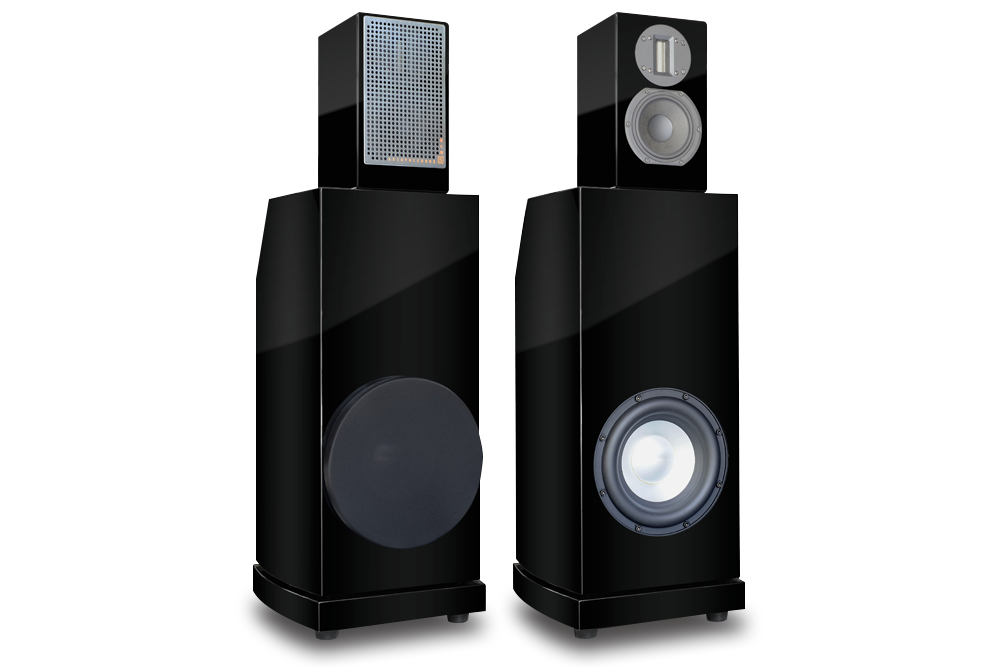Many audio enthusiasts and music lovers will agree: There are obvious merits to a high quality small speaker and, indeed, many purists eschew physically large designs with their potentially difficult to tackle room-coupling issues, in favour of a small monitor’s ease of placement, accurate soundfield recreation and other convincing attributes. These qualities may be related to the actual form — fundamentally, a small speaker’s cabinet will be inert even with relatively modest bracing — or performance related due to narrow baffles providing inherent diffraction characteristics resulting in very precise image focus. Having said all that, full range sound reproduction (wide frequency response with bass below 40Hz), when competently designed, is undeniably closer to the real thing therefore providing an overall more satisfying experience.
So what to do when you have the Axis Loudspeakers’ Voicebox S, a superbly-capable award-winning monitor but, as a designer and music lover, you seek to achieve verisimilitude to live music? That is, believability via extended range and dynamic expression.
These issues presented themselves to John Reilly founder of Australian speaker specialist Axis Loudspeakers. Here is the Voicebox S with its diminutive size and the resulting restrictions imposed by the irrefutable laws of physics (even if it’s surprisingly adept at fooling you into believing you’re listening to a much larger standmount speaker) but with such thorough resolution and overall exceptional performance that it begs… no, demands for a fuller extension.
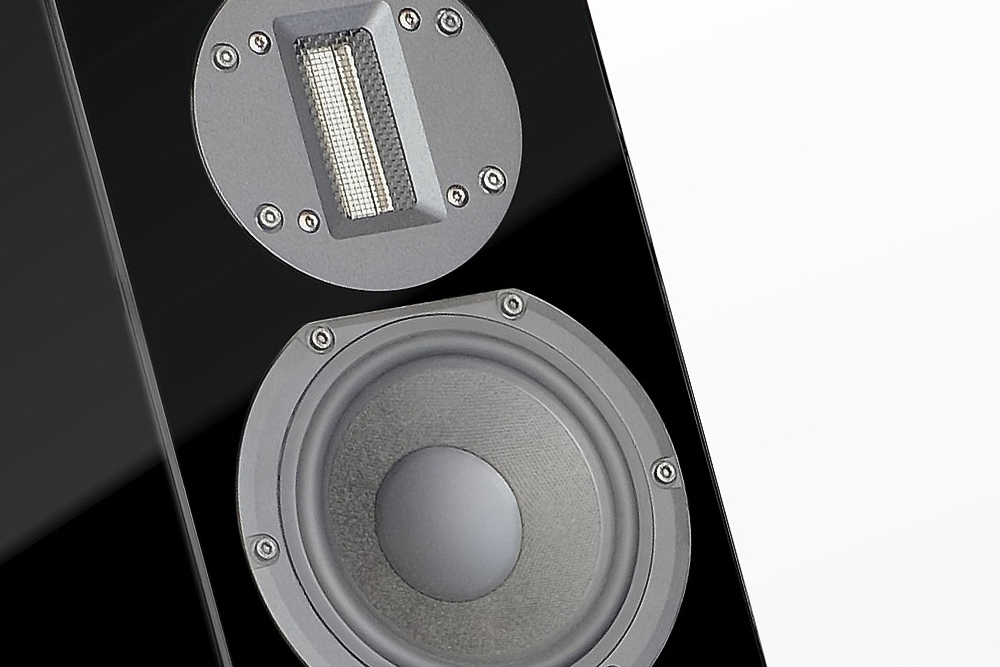
Reilly goes back to the drawing board and conceives a cunning solution aimed at preserving all the qualities of the monitor while extending its bottom end and dynamics to the level of a large floorstander. Best of both worlds a la WATT/Puppy — monitor sits atop of the bass unit — but with an active twist. Enter the EBS (Extended Bass System) module, an elegant rear-tapered and subtly-curved bass enclosure populated by a substantial Wavecor high-excursion all-aluminium 10-inch driver and a 150 watts Class-D plate amplifier making it an active bass extension solution. Control and connectivity are offered via Left/Right RCA inputs, level control, constantly-variable crossover frequency adjustment between 40Hz and 200Hz, switchable phase (0- or 180-degrees) and signal-sensing Auto on/off. The EBS is the perfect complement to the Voicebox S with a seamless crossover blend while extending the small monitor’s dynamic capabilities and its low-end response down to 20Hz (the EBS’s maximum upper limit suggestion is 150Hz).
The Voicebox S simply sits atop the EBS, engaging via an invisible embedded magnet system effectively coupling monitor to bass unit. An attractive and very well-built design, the EBS has been styled to match the high quality piano gloss finishes (black and white) of the Voicebox S with the thick multiple paint layers said to provide a discernible level of added cabinet integrity in addition to the mirror-like patina. The recommendation is for two EBS units negating the need for expensive stands. Should funds be limited, a single unit may be used with good results, however, optimum performance in the low registers (and indeed, higher up as I discovered) is obtained with a pair in situ.
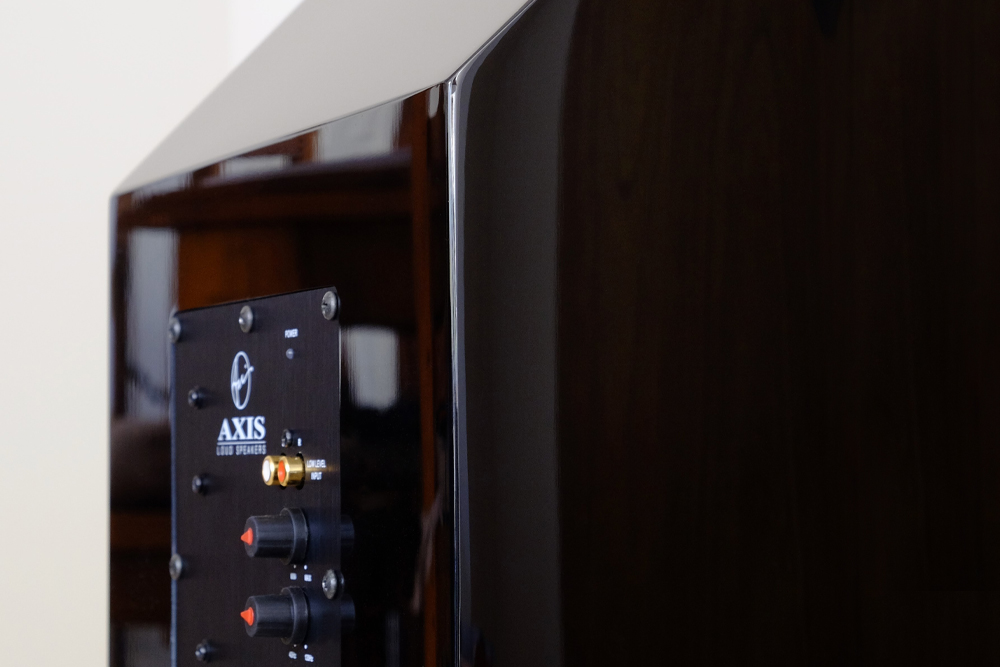
User friendliness
Placement with the listening environment is surprisingly easy. Within reason, the Voicebox S and EBS can be placed almost anywhere within the room. A good start would be at around 2.5m or so apart, with a narrow degree of toe-in. The EBS’ crossover and level adjustments permit wide positioning options whereby the EBS’ top crossover frequency can be taken up or down the scale depending on the small monitor’s positioning within the room and its distance from the front wall (atop the EBS). Then, depending on the additional support provided by boundary walls, the bass level can be adjusted to provide clean low-end, adequate room loading and pleasing bass to quench the listener’s own appetite.
Hook-up to the EBS modules necessitates a second set of line level outputs from your preamplifier or, if that second output is not available onboard, you can split a single set of Left/Right outputs via inexpensive and commonly available RCA plug to twin RCA socket adaptors stocked at any decent electronics store or hi-fi specialist. Your own amplifier runs the Voicebox S in the conventional way via its speaker outputs. Placed round-about where I normally position review speakers and tweaking the bass output just-so made for a rather satisfying start to the review process. The relatively-small combo provides an overall presentation with massive scale and surprising bass power and depth.
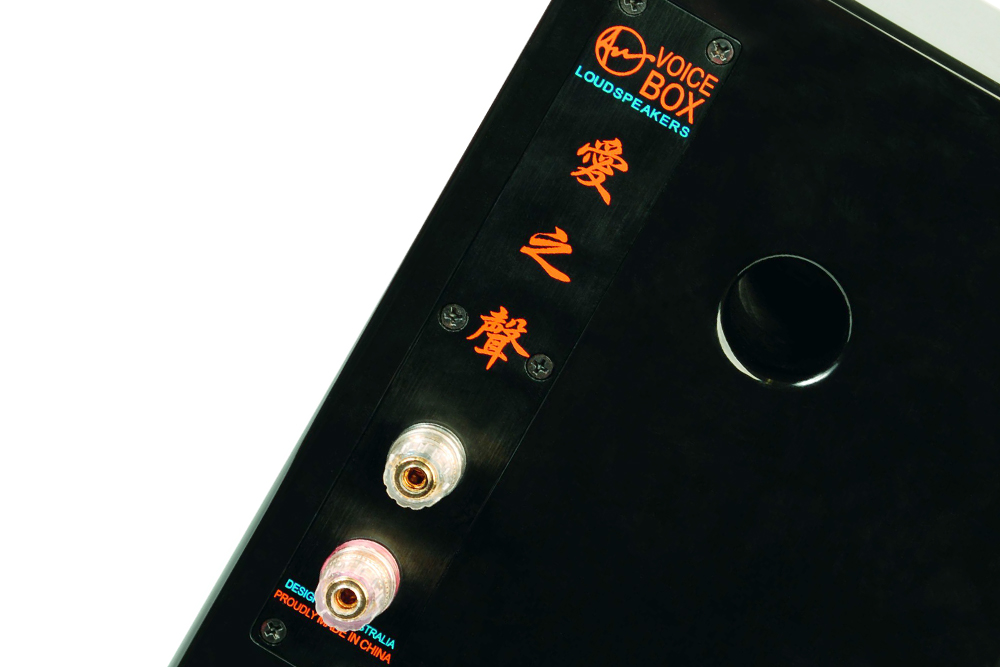
But what was most striking was the way that the combo does not detract from the outstanding qualities of the monitor sans bass unit. I’ve written at length about the many positive attributes of the Voicebox S – its extraordinary high frequency detail coupled with profound resolution, its razor-sharp imaging and the impeccable coherence. In the context of the Voicebox S and EBS combo, Reilly refers to presentational coherence as the product of inter-speaker “blend”. And following the instruction manual’s suggestions will provide a solid starting point to seamlessness – your room’s acoustic influence will vary this marginally but astute progressive tweaking will ultimately reap a one-of-a-cloth sonic presentation. On this important aspect, John Reilly elaborates:
We don’t see the EBS as a subwoofer. We see it as a way of extending the low bass of the Voicebox S, which has very good extension for its size, in a totally seamless way while providing a solid platform for the monitor to perform at its best. Also because we made the crossover range very narrow, but I think it provides superb integration between the EBS and the Voicebox S and the in-built amplifier does provide a degree of bass augmentation at specific frequencies. So, if there’s well-recorded bass in your music, that’s what will come out. We think it will go down to 18Hz in some rooms.
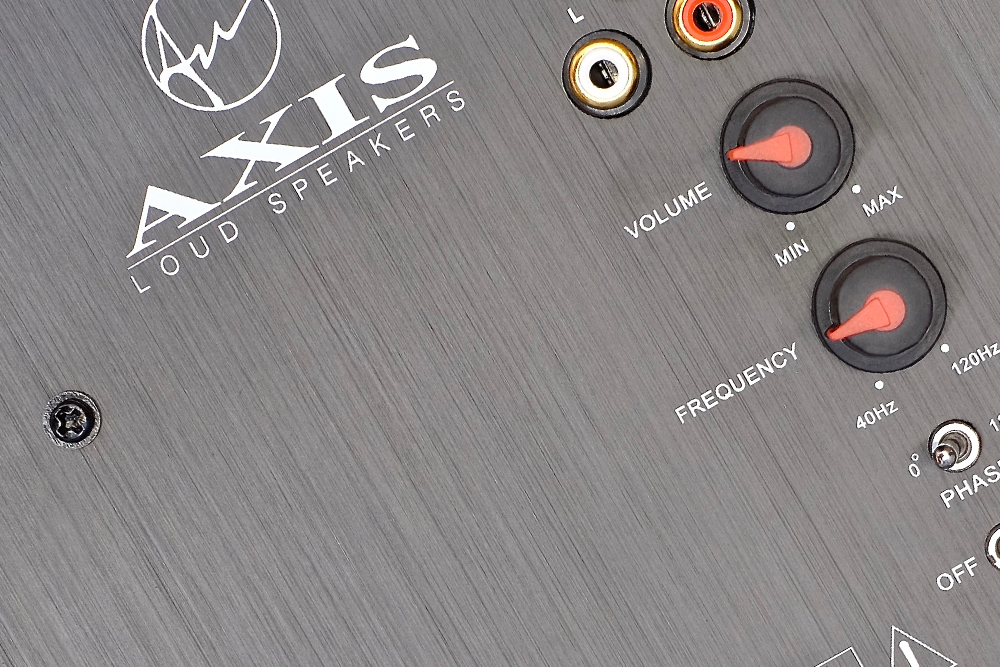
The low down
Being familiar with the generous qualities of the S I was keen to check out full-range music treats from the get-go of this assignment. My favourite bass killers were all pulled out and given spins – either via disc or hard drive. Jackson Browne’s “Sergio Leone” from The Naked Ride Home CD dug with tremendous depth through the mid-point of the track where a low note wave rolls out from the mix. If you have full range speakers, this is the track to challenge their bass prowess. The EBS’s high excursion aluminium driver pounds you with power the way that a larger design does. It’s in a relatively large enclosure and its proximity to the floor, and the reinforcement that provides, and the level of bass can be extremely potent. But it’s not just about lots of bass, the EBS plays tuneful, fast and very detailed bass frequencies that sound tonally natural. And it’s this ability to sound natural that provides benefits to the Voicebox S monitor.
Sitting pretty atop its bass brethren the monitors now sound as though they’ve found a more pronounced sense of scale and dynamics from the lower mids on up. And while music now takes on a grander perspective, it’s also gifted with a full-bodied, more natural and more lifelike presentation via subtle improvements in the performance of the outstandingly resolving ribbon tweeter. On that same track, “Sergio Leone” there are some subtle low level guitar pickings and sonic effects that are used to build atmosphere and anticipation at what’s to come from the remainder of the track. The Axis combo reveals all the detail and nuance while providing exceptional presence to Browne’s vocals when they cut-in. And the same applied to other tracks with microdynamic content, especially live recordings where acoustic guitars predominate such as in The Weavers Reunion at Carnegie Hall 1963 and Ryan Adams’ live masterpiece at the very same venue. The combo’s transparency and stunning transient attack clearly grants you all the subtle gradations in a way that is non-disruptive to the musical integrity of the composition. And this applies from the lowest octave to the highest top notes. This is a truly musical full range speaker system.
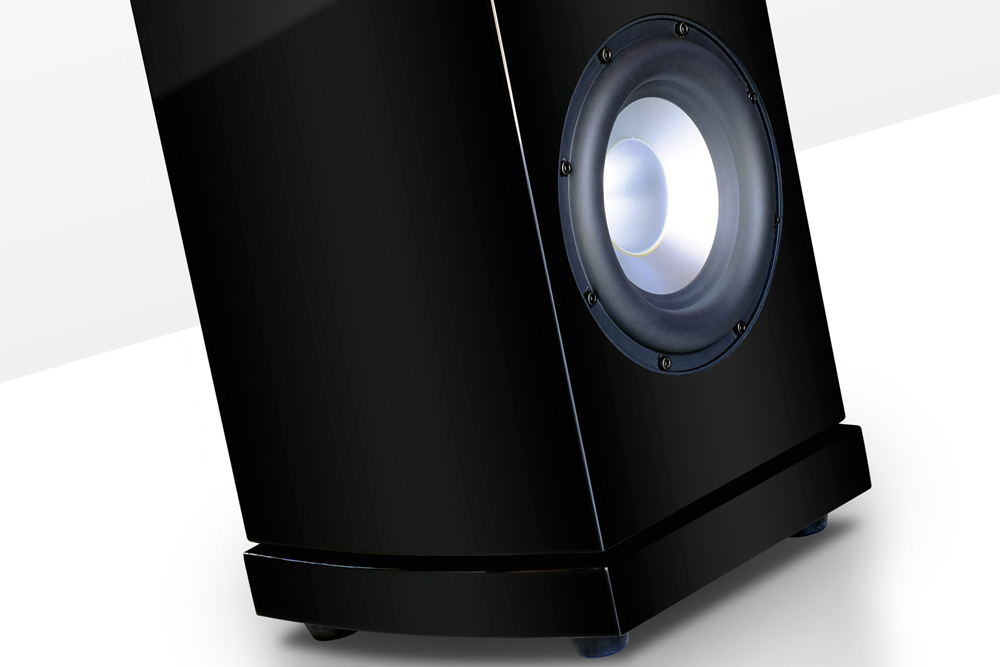
Revisiting other tracks I enjoyed while reviewing the Voicebox S, such as “Limbo Jazz” on Tony Dagradi Trio’s Live at the Columns was a most informative rediscovery. Where the small monitor excelled at providing a most satisfying experience, the addition of the EBS brought home, in a most uncompromising way, the substantial benefits of enclosure volume and large dedicated bass drivers. The wallop at hand from this most realistic of recordings was truly magnificent. The explosiveness of the kick drum was matched higher up by powerful snaps from the snare – well-recorded percussion has to be heard via this combo.
That audio show high-spinner, Chris Jones’ “No Sanctuary” has all the presence and heft of the singer’s cigarette tarnished gravel-voice while punching with tight rhythm on the track’s low bass accents – the very reason for this widely-used demonstration fare. Jones’ guitar pickings jump clear of the mix with true tone and dynamic expression.
And I come back yet again to the beauty in the monitor’s rendition of voices, be it male or female, which is in no way compromised by the inclusion of the EBS. In fact, it’s enhanced with the stronger sense of body and presence I describe above. The power and poetry of the much lamented Chris Cornell’s “Sweet Euphoria” from the Euphoria Morning CD had me on the floor, as did Jeff Buckley’s and KD Lang’s versions of Cohen’s brilliant “Hallelujah”. It’s an emotive, magnificent purity – almost a manifestation – of the vocal range (always the monitors’ strength given its model name) that is genuinely admirable.

Conclusion
Even for someone who’s been doing this for well over a decade, there are times when you know you’ve listened to something special. For a little while now, I’ve been on a great run with gear that has been revelatory in many ways (in reviews for other publications in another life). The Gryphon Antileon EVO and Audia Flight Strumento 4 being highlights in terms of amplification while, most certainly, Totaldac’s d1-core has covered the source area and has seen-off many a more pricey contender. Magico’s M3 and Sonus faber’s Serafino Tradition have provided equal measure of delight – with my own Wilson Alexia still giving me goose bumps three years on – on the loudspeaker front.
The Axis Loudspeakers Voicebox S and EBS now join the band. And what you get for your hard-earned is an exquisitely refined, accurate and nuanced monitor which, as a system with the EBS, has the bass power, depth and resolution of a large floorstander.
With this combo, my soul has been shaken and truly stirred.
. . . Edgar Kramer
This email address is being protected from spambots. You need JavaScript enabled to view it.
Associated Equipment
- Speakers — Wilson Audio Alexia
- Amplifier — Gryphon Audio Designs Antileon EVO
- Preamplifiers — Supratek DHT Reference, Lightspeed Attenuator LDR passive
- Sources — Yamaha CD-S2100 transport, Totaldac d1-core DAC, MacBook with BitPerfect software, AIFF files
- Processor — DEQX PreMate
- Cables – Vermouth Audio Black Pearl loom
Axis Voicebox S Monitor and EBS Extended Bass System
Prices: Voicebox S, $2495 AUD/pairl; EBS, $6995/pair
Warranty: Five years conditional.
Axis Loudspeakers
www.axisvoicebox.com
Australian Distribution:
Audio Marketing
+61 2 9882 3877
www.audiomarketing.com.au







